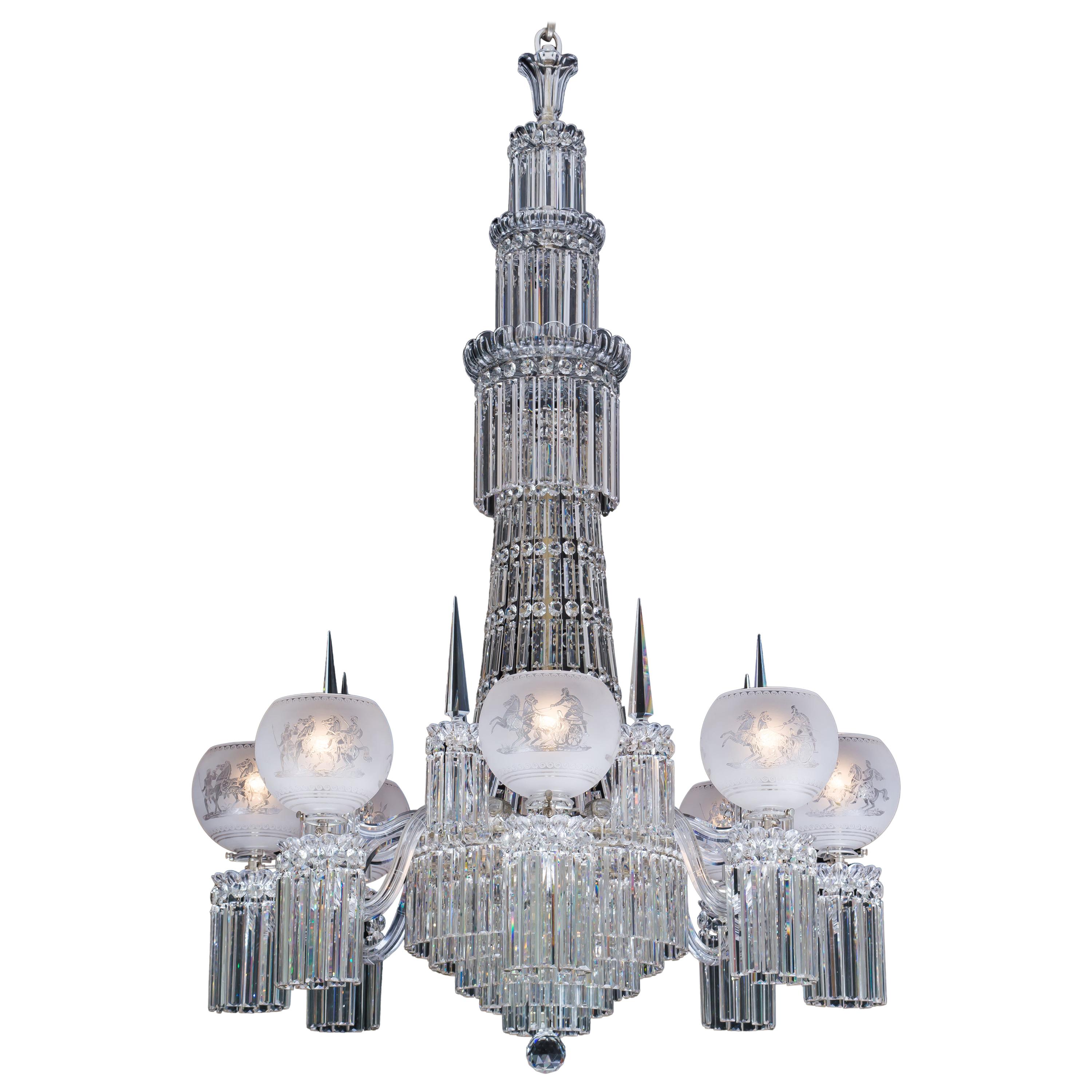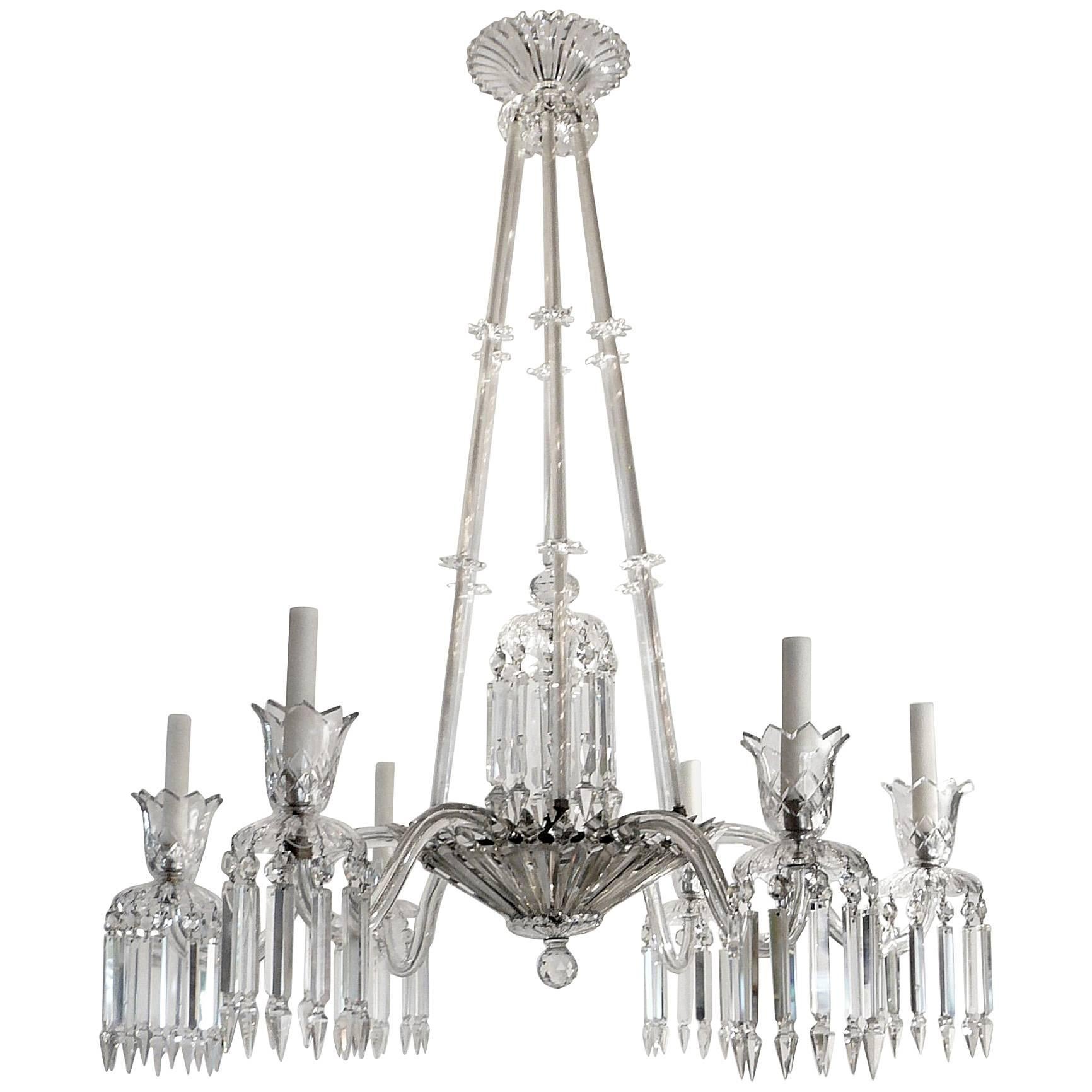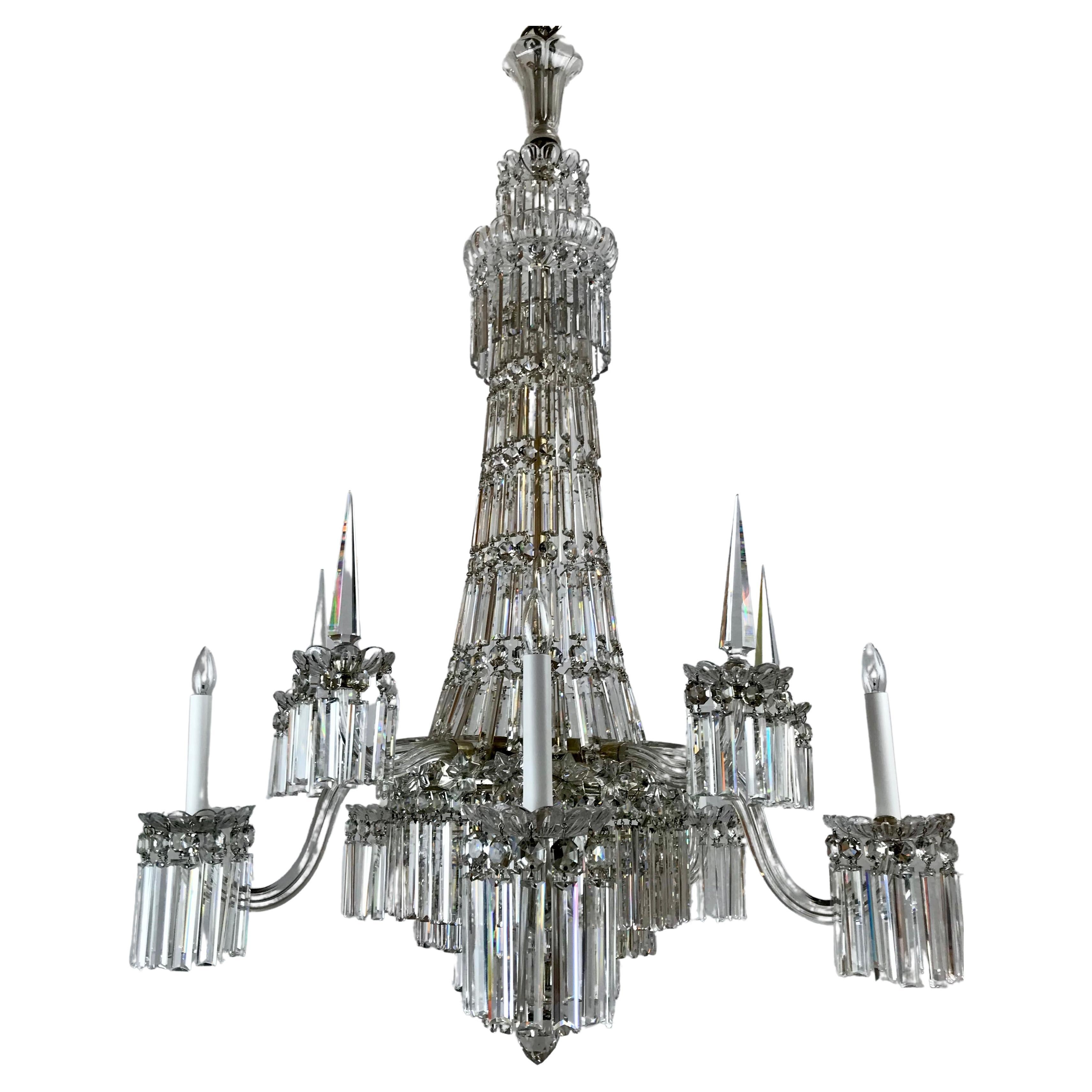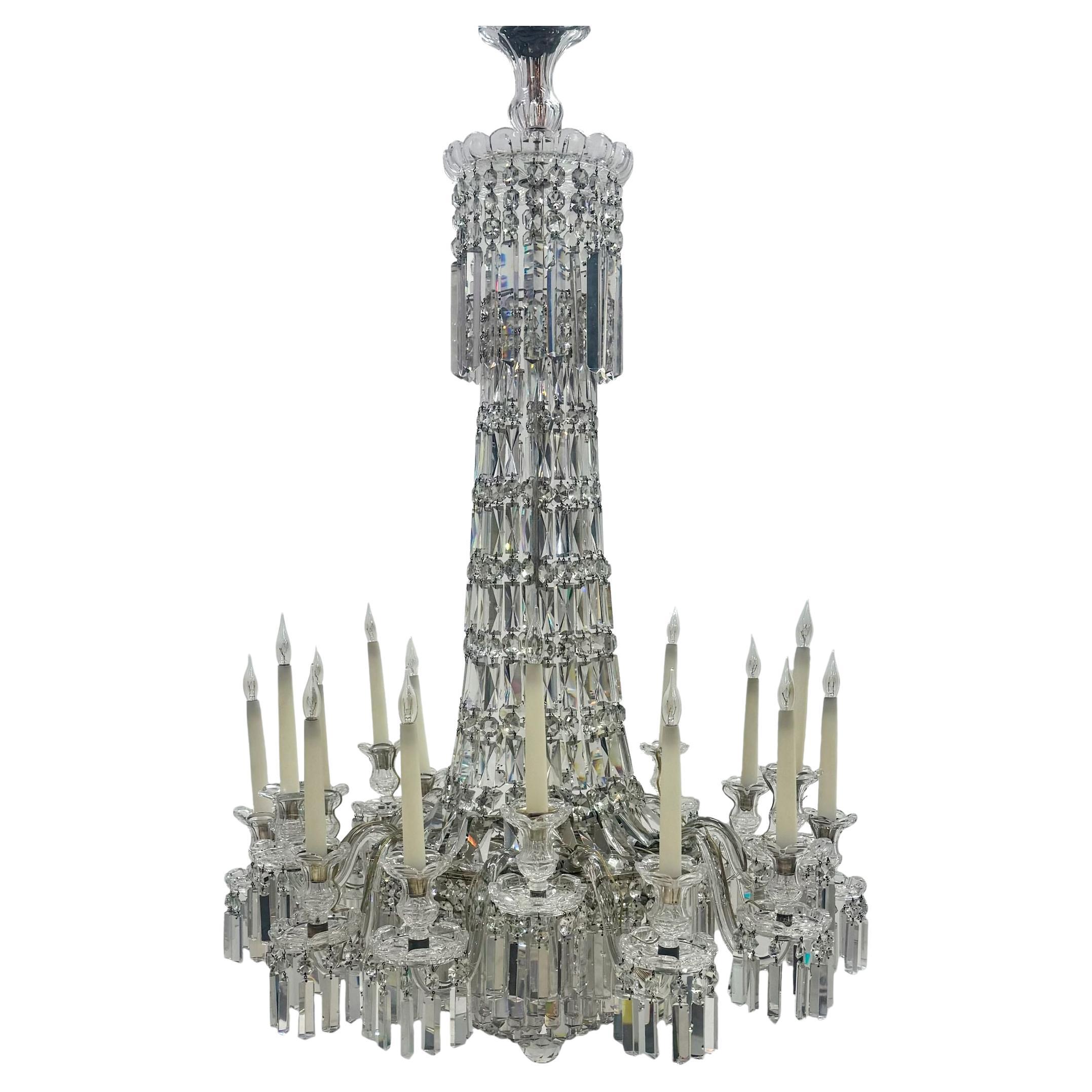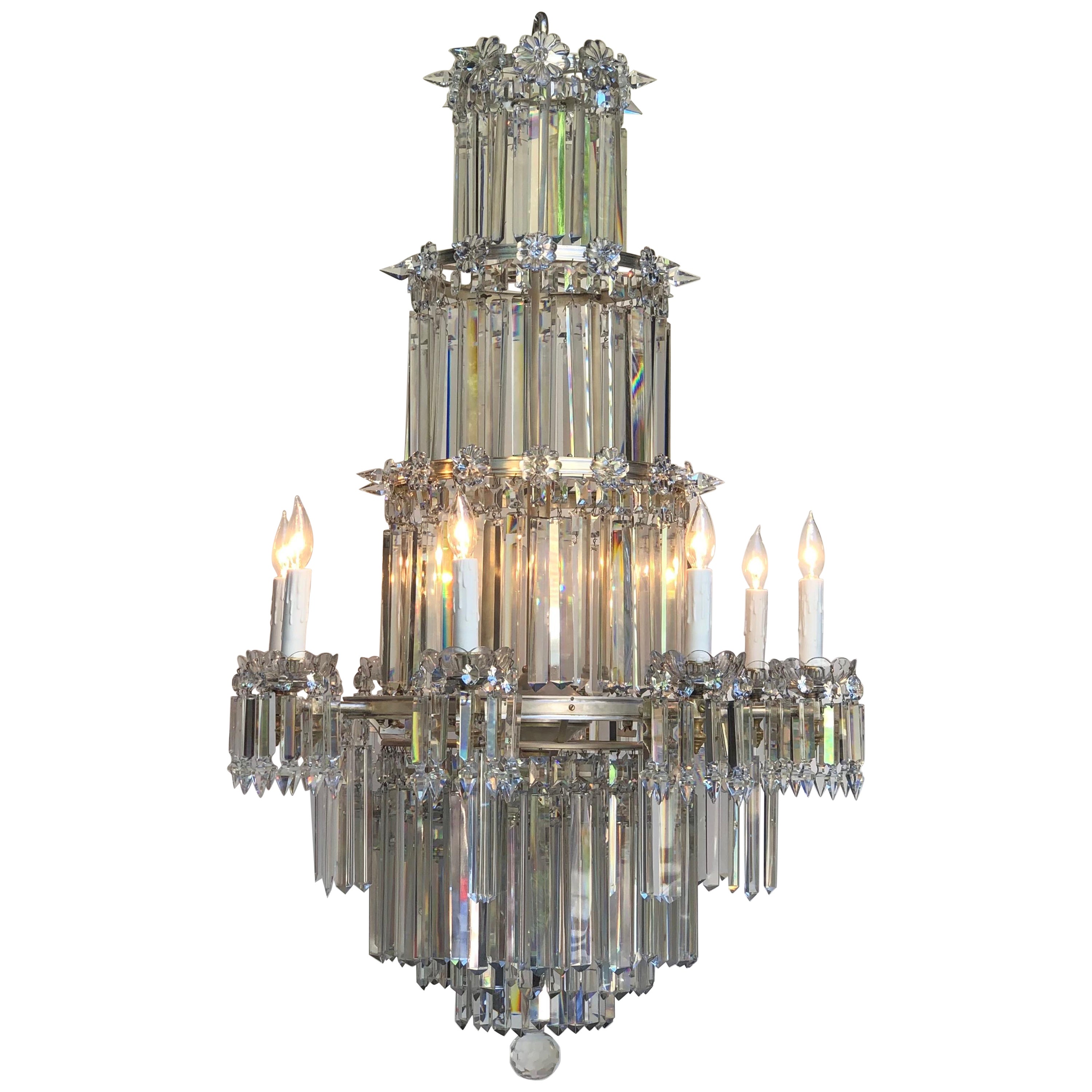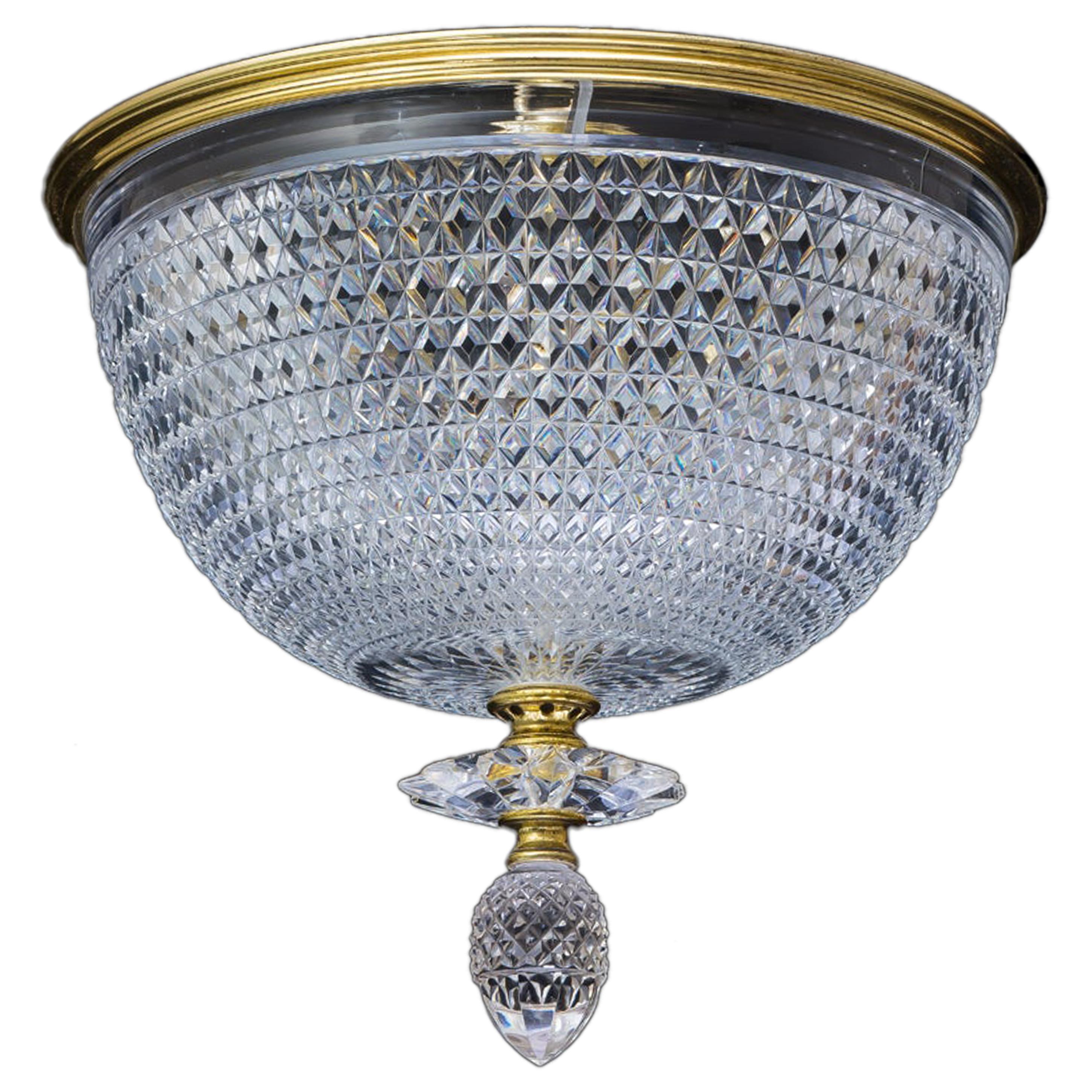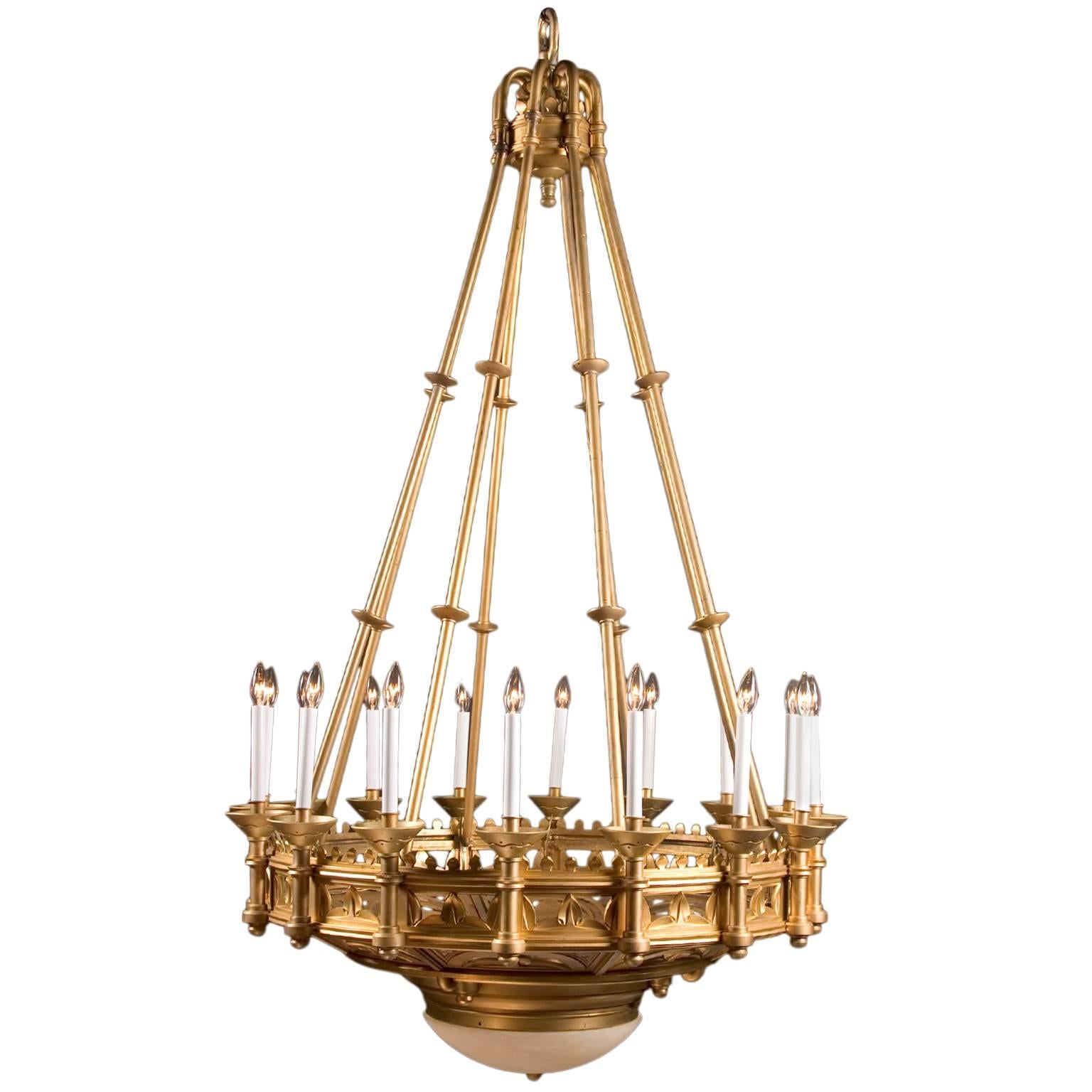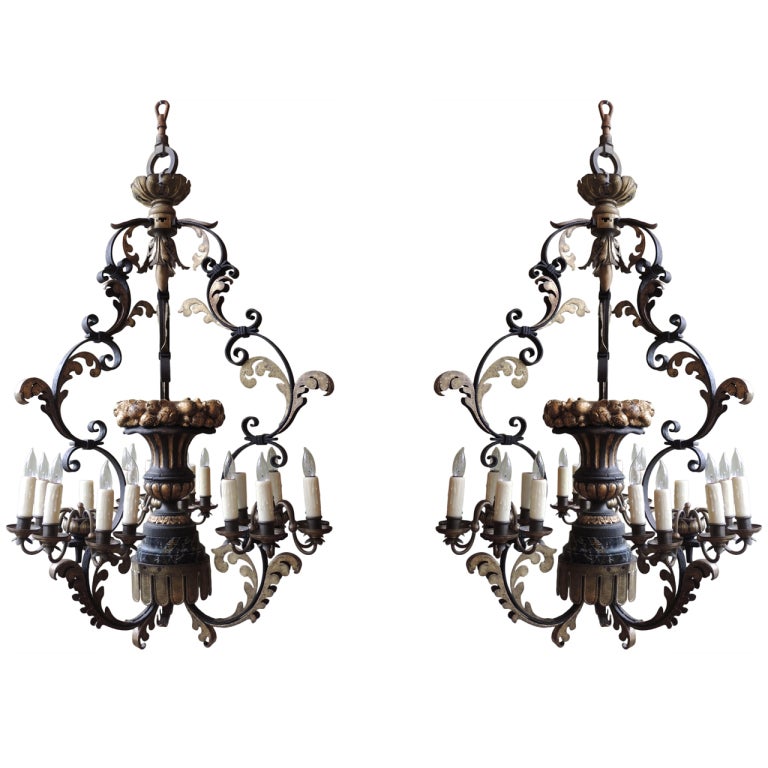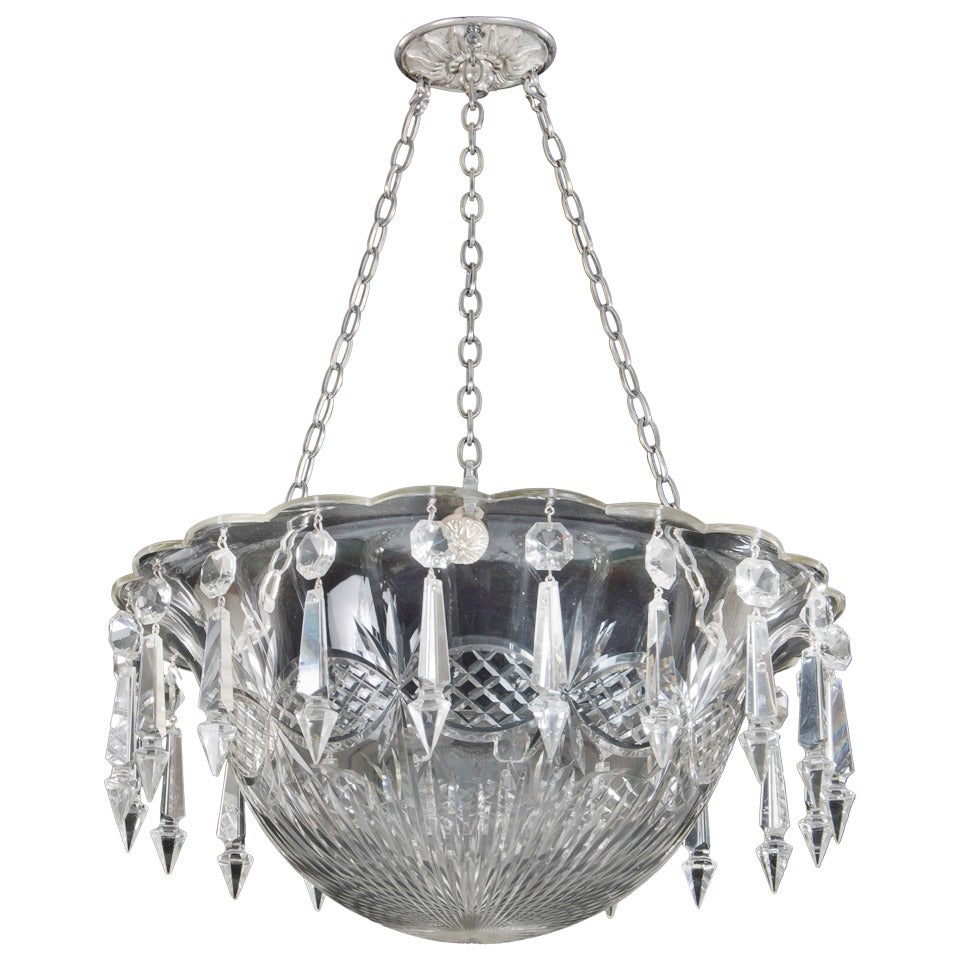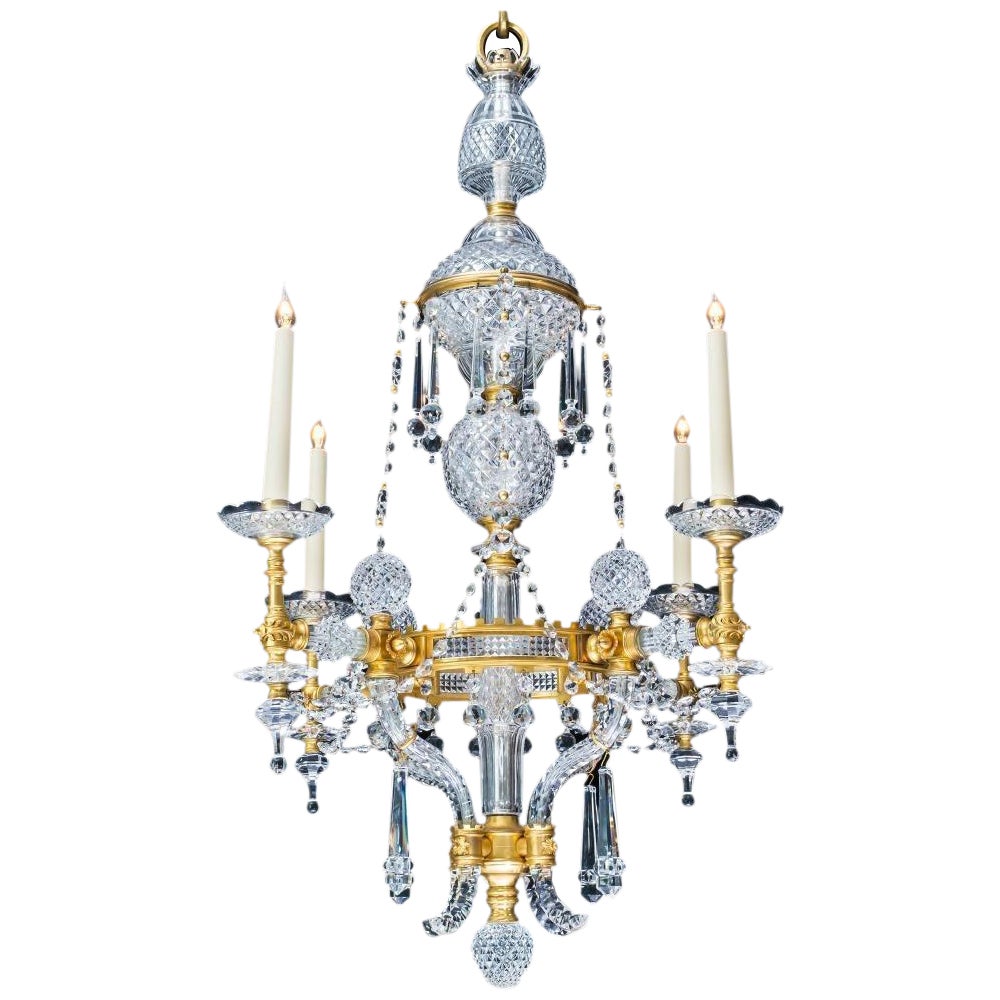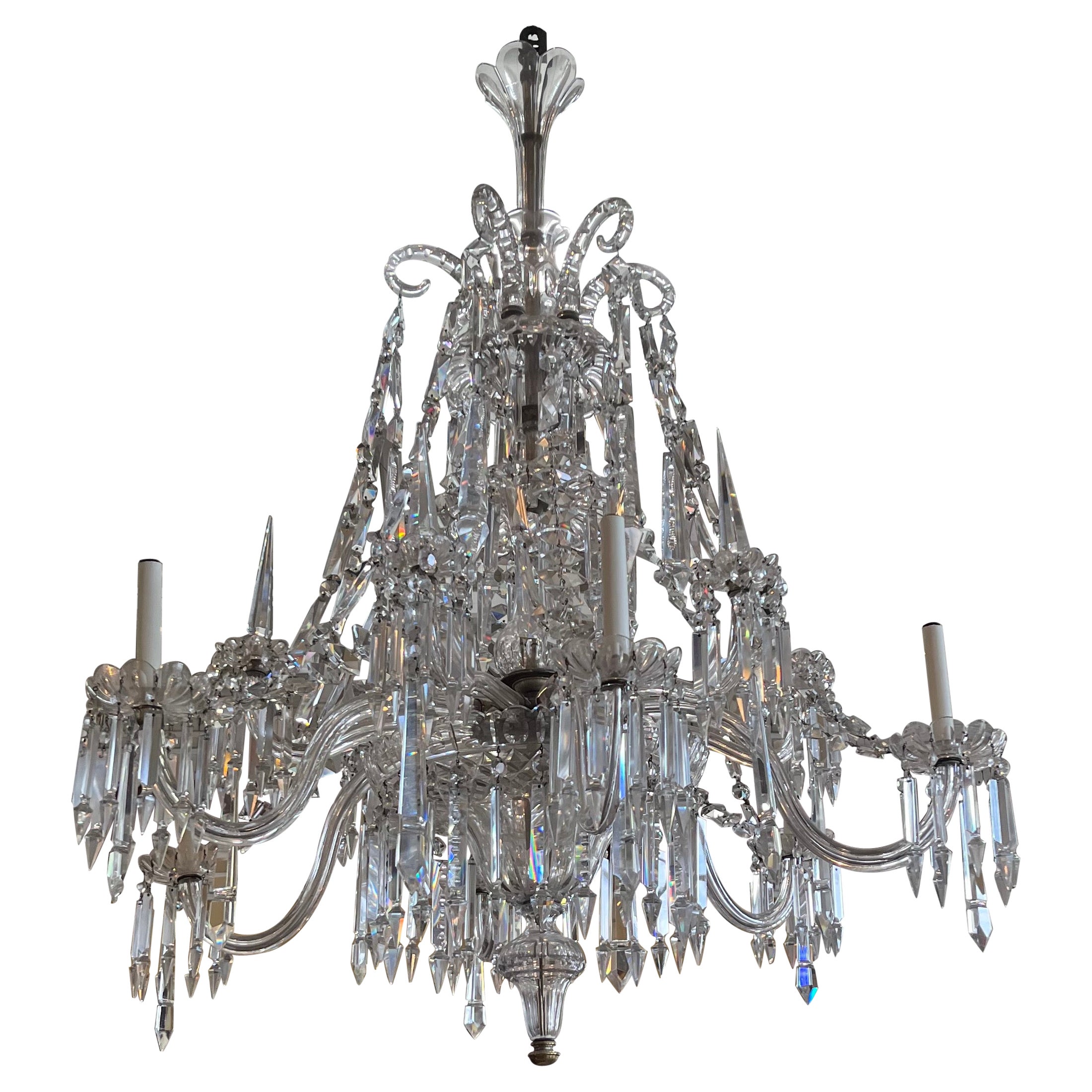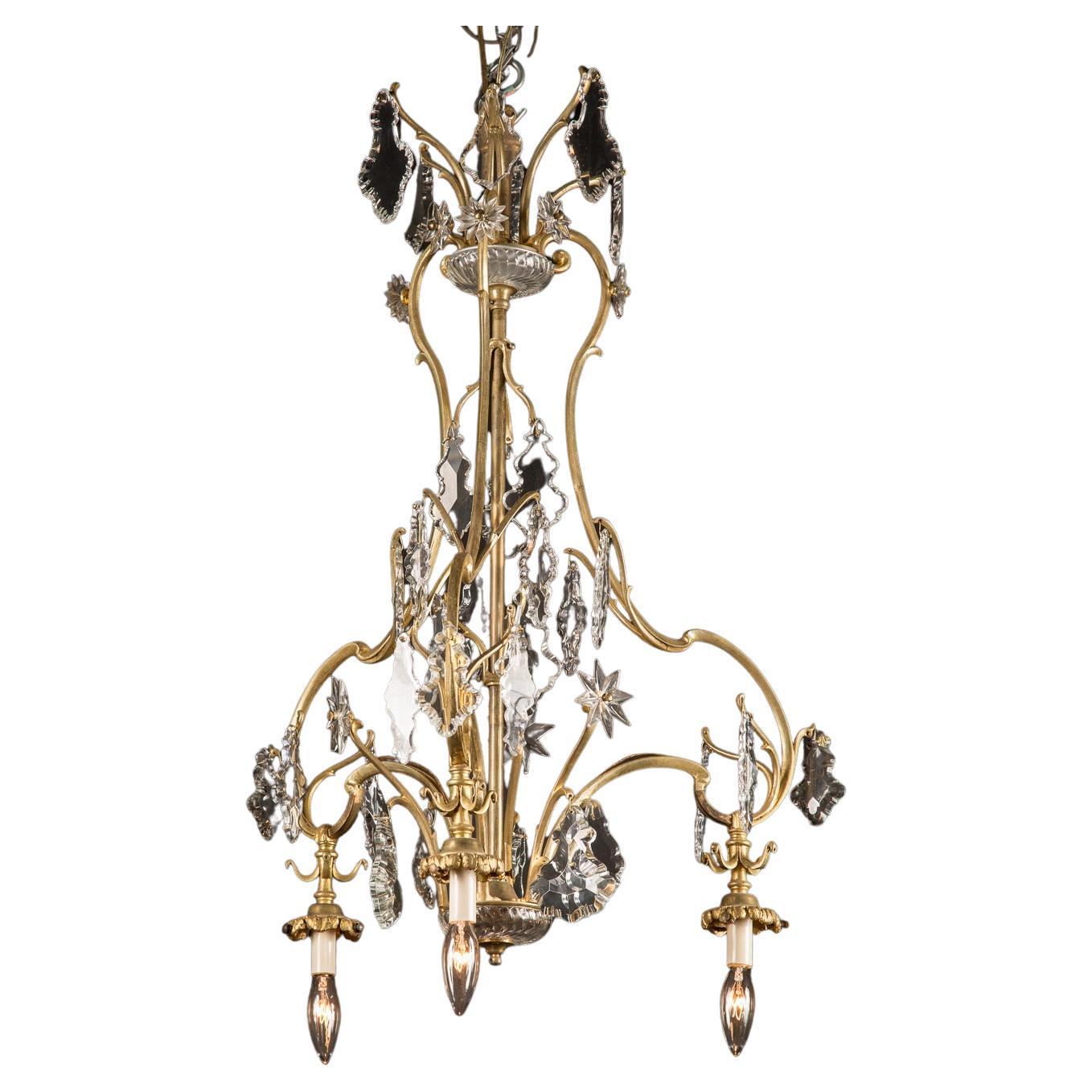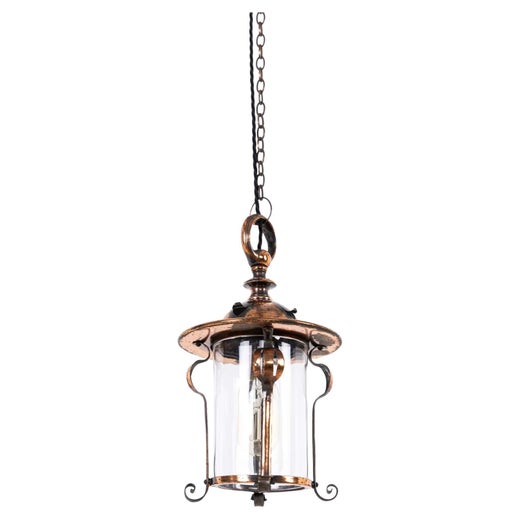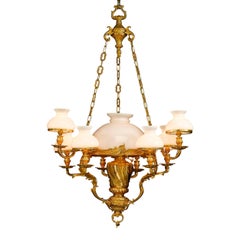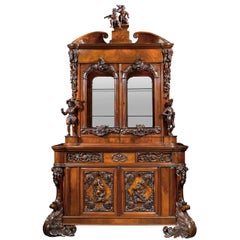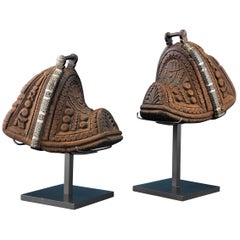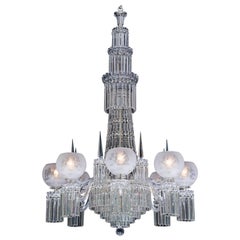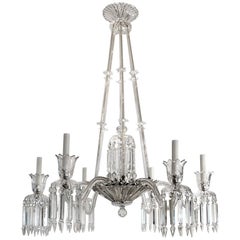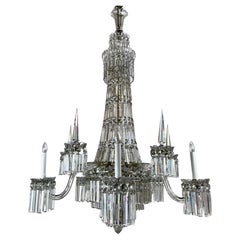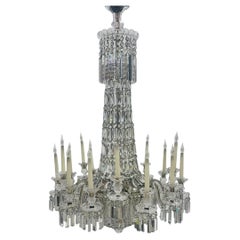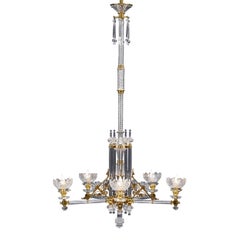
19th Century Gasolier by F. & C. Osler
View Similar Items
19th Century Gasolier by F. & C. Osler
About the Item
- Creator:F. & C. Osler (Maker)
- Dimensions:Height: 51 in (129.54 cm)Diameter: 27 in (68.58 cm)
- Style:Other (In the Style Of)
- Materials and Techniques:
- Place of Origin:
- Period:
- Date of Manufacture:circa 1879
- Condition:
- Seller Location:New Orleans, LA
- Reference Number:Seller: 29-28171stDibs: LU89116931543
F. & C. Osler
British glassmakers F. & C. Osler redefined the art of cut-glass design in an era of Victorian luxury, refinement and grandeur.
The firm began in Birmingham in 1807 by Thomas Osler, who established his business making small glass ornaments and pieces for chandeliers. His sons, Follett and Clarkson Osler, joined the company and, in 1831, reorganized it as F. & C. Osler.
During the 1840s, F. & C. Osler expanded production to include the manufacture of chandeliers and glass furnishings, opening a second workshop in London in 1845. The company focused on producing large-scale designs, leading to the creation of one of their most famous pieces: the 27-foot-high, four-ton Crystal Fountain for London’s Great Exhibition in 1851. Another notable F. & C. Osler piece at the exhibition was a pair of eight-foot-high candelabras purchased by Prince Albert for Queen Victoria. Today, they are on display as part of the Royal Collection at Osborne House on the Isle of Wight.
The success of F. & C. Osler’s Crystal Fountain established the company’s reputation as one of the finest glassmakers of the 19th century. Wealthy clients coveted its cut-glass chandeliers, wall sconces, epergnes, candelabras and decorative centerpieces.
F. & C. Osler also received several important commissions. In 1856, F. & C. Osler designed a large chandelier for St. George’s Hall in Liverpool and a 36-light chandelier for London’s Mansion House. In 1858, they were asked to produce tableware for a banquet held by Queen Victoria at Aston Hall, in Birmingham. The Queen is said to have been so impressed with the glassware she asked permission to keep a champagne glass.
F. & C. Osler thrived throughout the late 19th century, experimenting with complex cut-glass motifs and expanding its successful export market to India. They became a favorite glassmaker for Indian royalty and aristocratic English ex-pats.
By the 1920s, demand for cut-glass products waned, and F. & C. Osler closed its Birmingham factory in 1922. The company remained in business, albeit on a much smaller scale, until 1976.
Today, F. & C. Osler remains a symbol of grand Victorian glassmaking and is sought by antique collectors and interior designers worldwide.
On 1stDibs, discover a range of antique F. & C. Osler lighting, decorative objects and serveware.
More From This Seller
View AllAntique 19th Century French Rococo Revival Chandeliers and Pendants
Bronze
Antique 19th Century Dutch Other Bookcases
Mahogany
Antique 19th Century Chilean Other Arms, Armor and Weapons
Silver, Steel
Antique 19th Century Chilean Other Arms, Armor and Weapons
Steel
Antique 19th Century French Louis XV Secretaires
Bronze, Ormolu
Antique 19th Century English Other Tables
Mahogany
You May Also Like
Antique 1870s English Victorian Chandeliers and Pendants
Cut Glass
Antique Mid-19th Century English Victorian Chandeliers and Pendants
Crystal
Antique Mid-19th Century English Early Victorian Chandeliers and Pendants
Crystal
Antique Mid-19th Century European Early Victorian Chandeliers and Pendants
Crystal
Antique Mid-19th Century English Regency Chandeliers and Pendants
Crystal, Silver Plate, Brass
Antique Early 1900s British Victorian Flush Mount
Cut Glass
Recently Viewed
View AllRead More
Paul Revere Crafted This Silver Coffee Pot 250 Years Ago
Perhaps best known as a Revolutionary War hero, Revere was also an accomplished silversmith, and this pot is now available on 1stDibs.
Degas Portrayed These Exuberant Ukrainian Dancers with ‘Orgies of Color’
Discovered in Parisian cabarets, the performers reenergized the artist’s practice.
